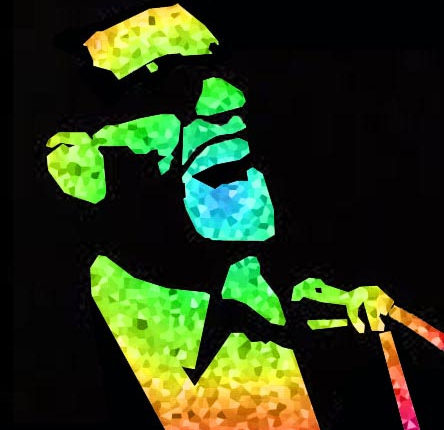 February is Black History Month, also known as National African American History Month, a time to celebrate the achievements of black Americans and to recognize their central role in our nation’s history. Here at Partners for Youth with Disabilities, one of the ways in which we observe Black History Month is by remembering the many African Americans with disabilities who have profoundly impacted our society, our culture, and our history. Like our mentors, they are inspiring and empowering examples for young people with disabilities, and a reminder to all Americans of the importance of ensuring that every one of us has opportunities to reach our full potential.
February is Black History Month, also known as National African American History Month, a time to celebrate the achievements of black Americans and to recognize their central role in our nation’s history. Here at Partners for Youth with Disabilities, one of the ways in which we observe Black History Month is by remembering the many African Americans with disabilities who have profoundly impacted our society, our culture, and our history. Like our mentors, they are inspiring and empowering examples for young people with disabilities, and a reminder to all Americans of the importance of ensuring that every one of us has opportunities to reach our full potential.
Ray Charles & Stevie Wonder
Both Ray Charles and Stevie Wonder are musical legends with visual impairments. Charles, who died in 2004 at age 73, was born with sight, but began to lose it at age five, most likely due to Glaucoma. He was completely blind by age seven. Charles overcame a poverty-stricken upbringing in Florida to have a career that spanned nearly 60 years and every musical genre, from the soul stylings he pioneered in the 1950s to country, jazz, R&B, and a gospel-tinged version of “America the Beautiful,” which became an instant classic. He received numerous accolades and honors throughout his career, including being commemorated on a “Music Icons Forever” postage stamp last year.
Stevie Wonder became blind shortly after his birth, but he was a Motown recording artist known as “Little Stevie Wonder” by the time he was 11 (ironically, his first album was a collection of Ray Charles covers). At age 13 he became the youngest artist to top the Billboard Hot 100 with his song “Fingertips.”—the first of more than 30 singles to make the Top 10. Wonder, now 63, went on to win 22 Grammy awards, an Academy Award, and the Library of Congress’ prestigious Gershwin Prize for pop music.
In a 2012 interview Wonder said he never thought of being blind or being black as a disadvantage. “I am what I am. I love me!” he said. “And I don’t mean that egotistically – I love that God has allowed me to take whatever it was that I had and to make something out of it.”
Harriet Tubman
Harriet Tubman was born into slavery in Maryland in 1820, but eventually escaped later to Philadelphia and then went back to rescue her family. Early in her life, Tubman, who died in 1913 at the age of 93, suffered a severe head wound when a slave owner hit her with a metal weight. This injury caused Tubman to have debilitating epileptic seizures and narcolepsy throughout her life. But she still helped more than 300 people escape slavery in the South through the network of safe houses known as the Underground Railroad. Tubman also served as a Union spy during the Civil War and was influential in the women’s suffrage movement as well.
Whoopi Goldberg & Will Smith
Academy Award-winning actor Whoopi Goldberg struggled all through her school years because of un-diagnosed dyslexia that kept her from being a successful student. As she has said, “I knew I wasn’t stupid, and I knew I wasn’t dumb. My mother told me that.” Thanks to her mother’s belief in her, Goldberg achieved her dream of becoming a successful comedian, actor, talk show host, and children’s book author. Goldberg has also been active in various humanitarian causes, including advocacy for the rights of children and homeless people (she was one homeless herself), and the fight againt HIV and AIDS.
Box office superstar Will Smith is also dyslexic. He has attributed much of his success as an actor to his early struggles with reading, saying it pushed him to achieve greater and greater things. Smith also believes his dyslexia makes him approach acting and producing movies differently than others in his profession His drive has certainly paid off, as the star of the Men in Black franchise remains one of the highest paid actors in Hollywood.
James Earl Jones
James Earl Jones has one of the most recognizable voices in show business and his performances in Field of Dreams, The Lion King, and Star Wars are iconic. Yet, as a four-year old, Jones developed a severe stutter that caused him to shut down and barely speak to anyone for eight years. As he recalled in a 2010 interview, “Stuttering is painful. In Sunday school, I’d try to read my lessons and the children behind me were falling on the floor with laughter.” Jones overcame his stutter through therapy and practice, and although he still stutters, he’s has said he has learned, “how to use it, how to work around it.”
For a longer list of famous black people that have a disability, check out this list from the University of Texas.

10 Successful and Widely Recognized People with Disabilities | SW 250 at Binghamton University
[…] Slowinski, S. (2014). Recognizing Black Americans Who Live With Disabilities. Retrieved from (http://www.pyd.org/blog/black-history-month-disability/) […]